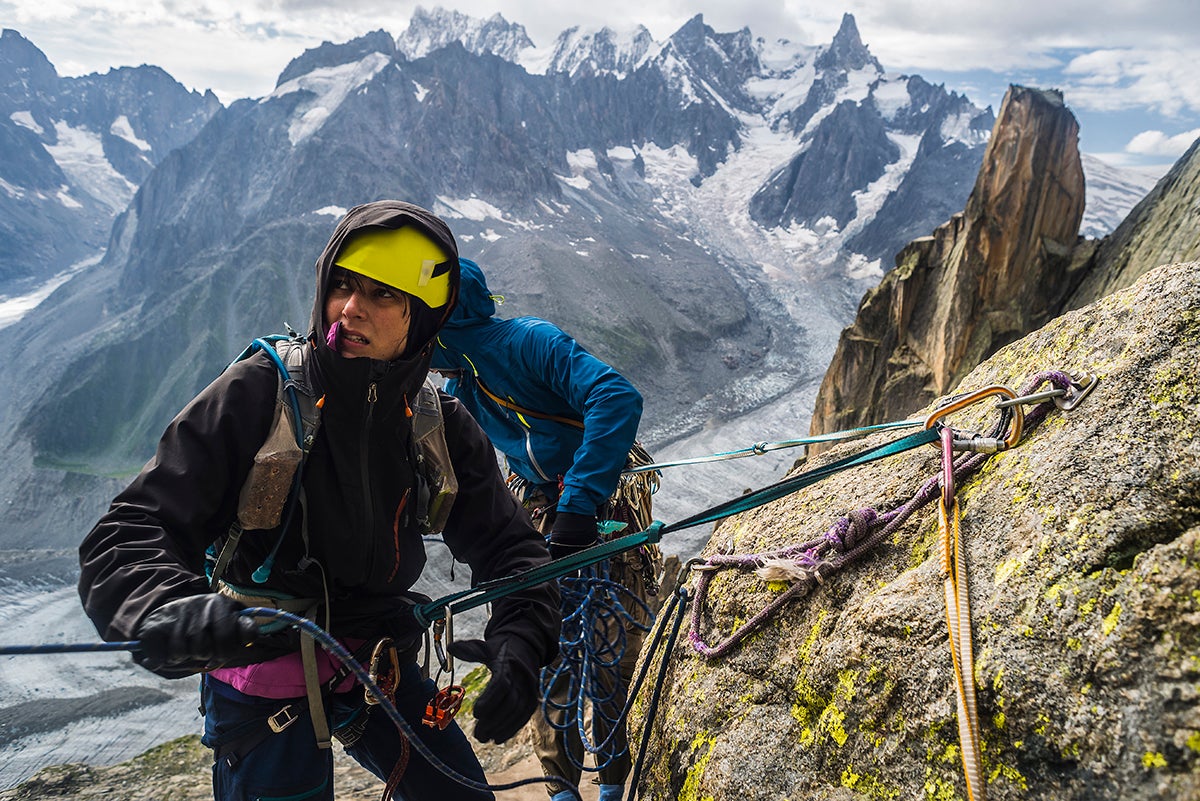For Safety's Sake, Don't Do This: Simul-Rappel

Rappelling in French Alps, Le Soleil Rendez-Vous avec la Lune on Grepon, Aiguille du Grepon, Haute-Savoie, France (Photo: Getty Photo)

While many climbers simul rappel to save time, simul-rappelling increases risk. There are dozens of ways to save time that minimize risk, so consider not simul-rappelling the next time someone suggests it—and picking up a few minutes another way.
Simul-rappelling can be a useful technique in the right circumstances—such as descending from a spire-top summit with no available anchors—but those situations are rare, and most climbers will never encounter them. The vast majority of climbers stand to profit more from speedier, more efficient transitions while climbing than simul-rapping. Lightening your pack by five pounds will yield minutes saved on a steep, uphill approach. Placing gear that’s more easily retrieved can save valuable time on a long route. Strategies like these, and many more detailed in The Mountain Guide Manual, can improve safety and speed for a climbing team. We recommend carefully considering simul-rappelling before using it in the field.
- Simul-rappelling without both climbers having a backup (third-hand) on their respective brake strands doubles the chances of a catastrophe. Should one climber lose control, the rope will feed through his rappel device and begin sliding through the anchor.
- If one climber unweights his rappel, it introduces slack into the system and the rope will slip at the anchor, effectively dropping the other climber. If this occurs at an unlucky moment, or the rope begins to pull unchecked through the first climber’s device, it can result in a tragedy.
- Less-experienced climbers typically rappel slower on a single-strand of rope because the relatively low friction of a single-strand rappel makes them nervous. They elect to simul-rappel, but then fail to make up any time because of the slower rappel.
- While simul-rappelling, both climbers arrive at the next rappel station nearly simultaneously, which can be awkward (and slow). Typically, one rappeller waits up top while the other manages the anchor and/or transition. Having one climber prep the station speeds up the second climber going off rappel. Often it would be faster (and safer) to simply rappel in a traditional fashion.